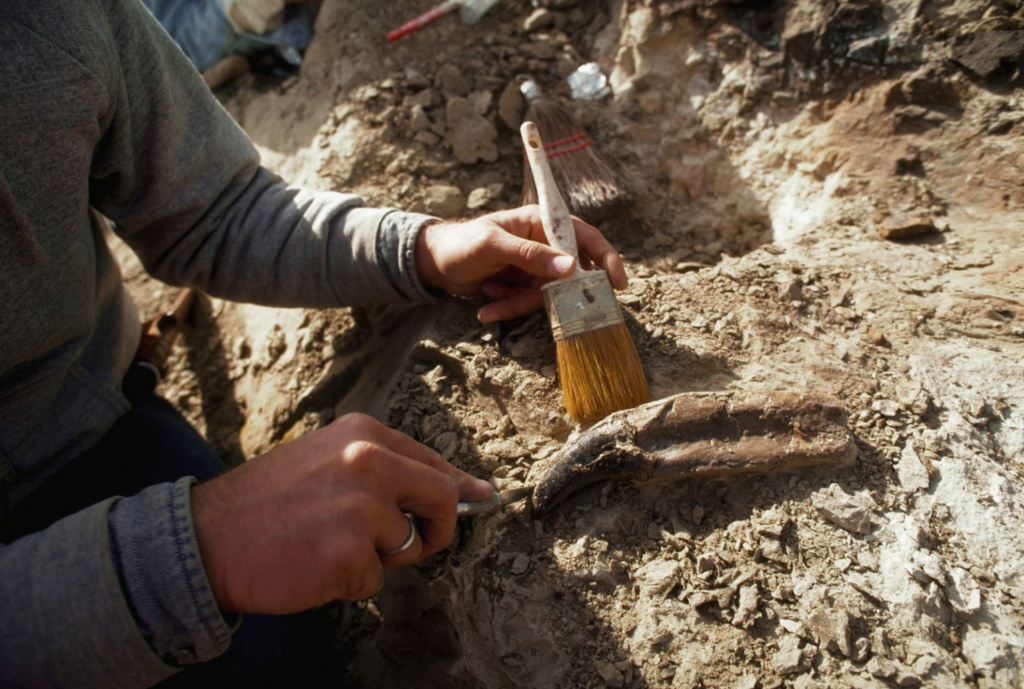It Is 514 Million Years Old.. Fossils That “Do Not Belong To Any Living Organism” Baffle Scientists

Three-dimensional star-shaped fossils, 514 million years old, have baffled scientists after they were discovered more than 100 years ago.
The strange fossils were found in a 500-million-year-old bedrock in the southwestern United States in 1896.
At the time, paleontologists assumed that these were the remains of the ancient tentacled jellyfish, a lineage of animals dating back at least 890 million years. And they called it Brooksella alternate.
These bizarre structures of Brooksella alternate have suffered an identity crisis since they got their name. For decades, scientists have argued that they are the remains of burrowing worms, bulbous algae or glass sponges.
Meanwhile, others are not convinced that these structures are fossils and instead explain them as gas bubbles.
In 1896, scientist Charles Doolittle Walcott was given the task of examining enigmatic star-shaped fossils found in the Conasoga Formation in the southeastern United States. Walcott initially described the fossils as tentacled jellyfish. However, it was also considered that they could be hexapods, despite the fact that he did not detect traces of the spicules that form part of the skeleton of these marine animals.
Since that date, the taxonomic identity of Brooksella alternate has been re-evaluated on multiple occasions.
Now, a new look at Brooksella alternate using high-resolution 3D imaging and chemical analysis indicates that these structures are, in fact, a "pseudofossil".

According to the authors of the new study, Brooksella is not a sponge, but an unusual form of silica. This natural mineral particle can fuse to form spherical, cubic or hexagonal shapes.
And what looks like Brooksella's "mouth" is actually directed downward toward the sediment, making it very difficult to filter food out of the water like a sponge would.
The downward-pointing "mouth" might make us think of starfish, but the ancestor of all sea stars is thought to have appeared on Earth's scene only 480 million years ago, tens of millions of years after the Brooksella fossil was dated.
Hidden worms don't seem to be a satisfactory explanation either. While these organisms were present on Earth during the middle Cambrian period, scientists found no sign that they made star-shaped structures.
The only explanation that made sense came when experts compared Brooksella to other concrete forms of silica produced by Cambrian bedrock around the world.
The team wrote: “We found no difference between Brooksella and concrete, other than that Brooksella had lobes that were not present in concrete. Thus we conclude that Brooksella was not part of the early diversification of sponges in the mid-Cambrian seas, but was an unusual type of silica concrete. The formations can be all kinds of shapes, to the extent that some appear to have formed organically.”
"The structure of Brooksella intrigued me because, unlike most fossils, it had a three-dimensional shape like puffy star-shaped dough which is unusual for squishy animals like sponges," explains paleontologist Sally Walker of the University of Georgia.
In this new investigation, Brooksella was ruled out to be of biological origin, after subjecting it to chemical analysis together with high-resolution 3D images obtained by micro-CT.
But this does not mean that scientists have solved all the mysteries of Brooksella. It remains unclear, for example, why so many strangely shaped concretes have been found in this one region of the world.

These objects look quite alike from the outside, but when scientists examined their internal dynamics using micro-scanning, they found that they are all very different in nature. More research will be needed to find out how they actually formed.
"While the applications of microCT are nearly endless in materials science and engineering fields, their ability to annotate the fossil record is just beginning," says geoscientist James Schiffbauer of the University of Missouri. This project is an excellent example of the kinds of fossil mysteries we can solve with microCT applications.”
Source : websites

